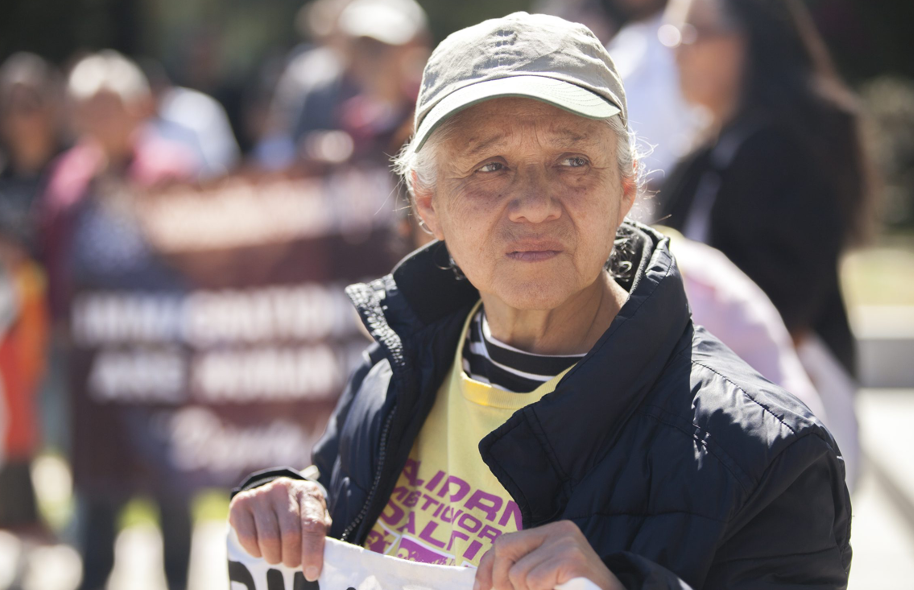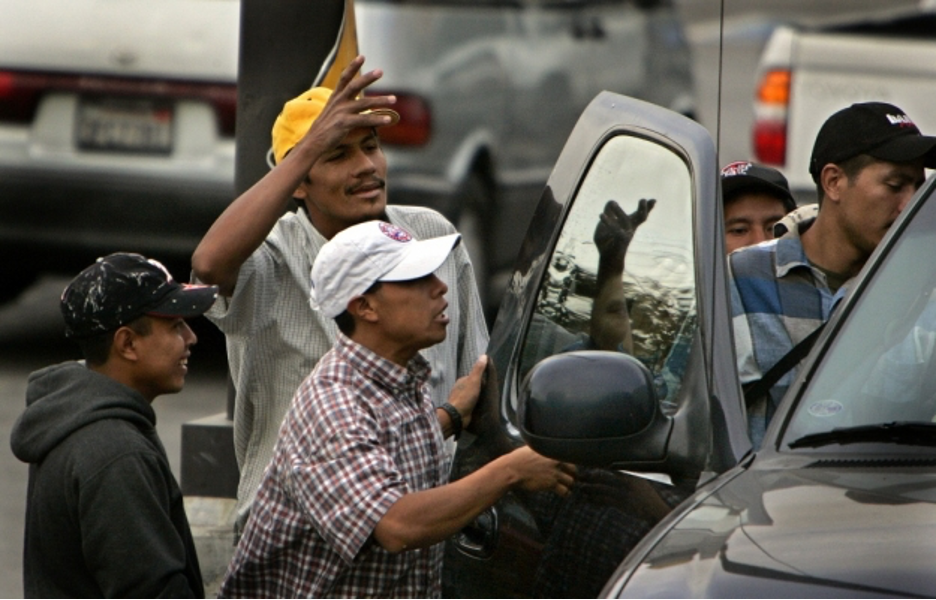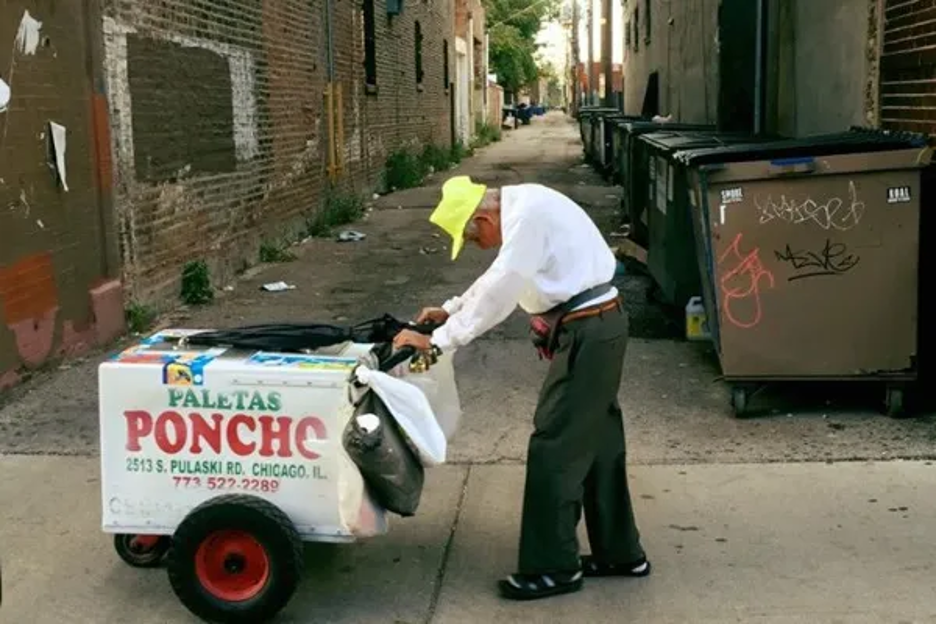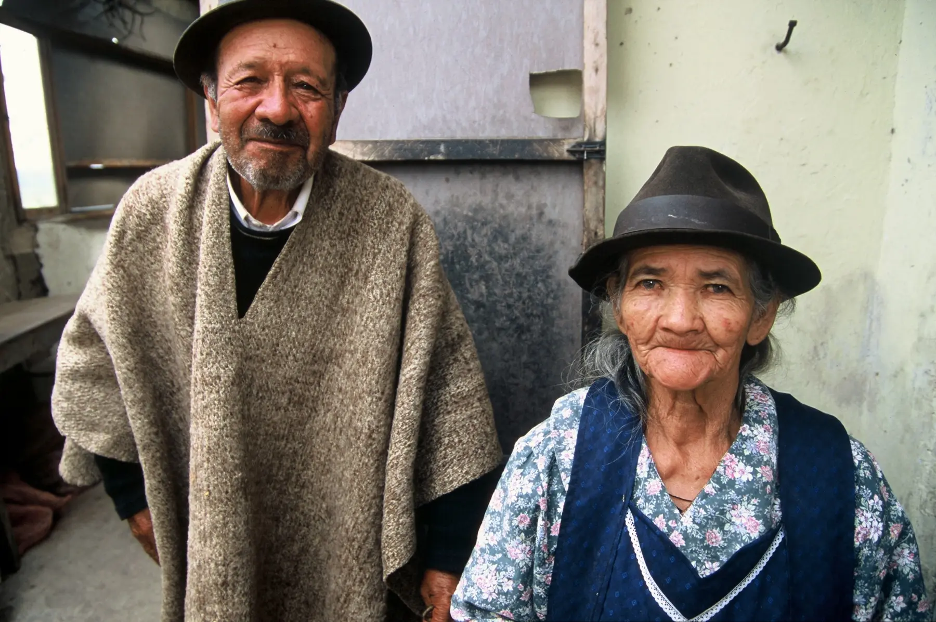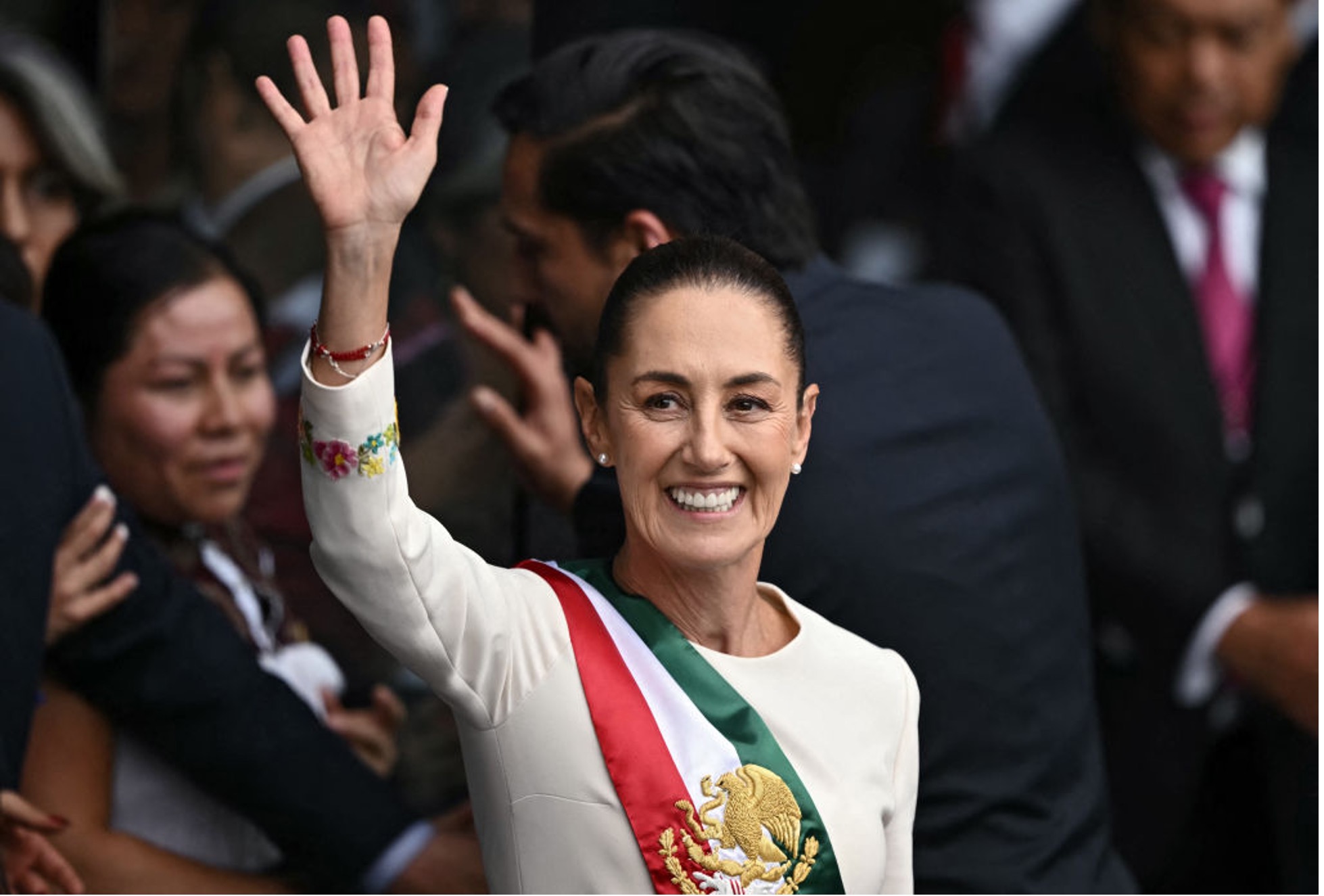|
|
The weekly newsletter of the Mexico Solidarity Project |
|
Every issue archived online at mexicosolidarityproject.org |
|
October 16, 2024 |
|
|
|
Aging Immigrants: No Gold in Golden Years |
|
Meizhu Lui, for the editorial team |
|
|
Immigrant families continue to suffer: CA Immigrant Policy Center |
|
It’s a familiar sight in cities across the US: groups of mostly Mexican men standing in a Home Depot parking lot, hoping that you or I will give them a job for a day. We know they’re undocumented, but we hire them anyway. The meager wages we pay will barely last them a day’s spartan existence — and they still will manage to send money home.
In spite of the demonizing rhetoric, undocumented immigrants play such a commonplace role in our lives that we take them for granted. Remember Zoe Baird, who was nominated for Attorney General by Democratic president Clinton? She broke the law by hiring an undocumented nanny and failing to pay her Social Security taxes. When Republican Mitt Romney ran for president, we learned he had an undocumented gardener. Me? Guilty as charged — I hired a friend to rebuild a porch, and his assistant was undocumented.
There inevitably comes a time when those who work so close to us can no longer perform the job. What happens then? As Nik Theodore learned in hearing the stories of 1500 elders, most have zero income, not a copper penny of their own.
Shouldn’t these workers enjoy some fruits of their decades of labor? Mexico says yes. It has gratefully acknowledged the service of their citizens abroad in sustaining the poorest families and contributing to the national economy. Therefore, it will extend its old age pension benefit to elderly Mexican workers in the US. For those of us who are US citizens, we can demand that the US do the same. Hard-working elders, people we’ve trusted with our homes, gardens and children, deserve some gold for these not-so-golden years. |
|
For a deeper dive into current news and analysis in English, check out our media website. And definitely see the new English podcast ¡Soberanía! (Sovereignty) with José Luis Granados Ceja and Kurt Hackbarth. They entertain, while dismantling the lies and distortions about Mexico fed to us by the mainstream media. |
|
Don’t miss an issue! Sign up for a free Mexico Solidarity Bulletin subscription. |
|
|
Running on Empty: Our Undocumented Elders |
|
Nik Theodore is head of the Department of Urban Planning and Policy at the University of Illinois at Chicago. He focuses on economic restructuring, labor standards and worker organizing, researching how urbanization is entrenching social inequalities and political-economic exclusion. Among other media, he has written for the New York Times, Wall Street Journal, and Time and has appeared on CNN, the PBS News Hour, All Things Considered and MarketPlace. He worked with the National Day Laborer Organizing Network (NDLON) on a survey and report about the situation facing older immigrant workers. |
|
|
What kinds of jobs do immigrants from Mexico do? Are working conditions different for documented and undocumented workers?
About 10.6 million Mexicans work in the US; we don’t know what percentage of those are undocumented. Besides agriculture, workers are clustered in the growing construction sector — typically, construction jobs are residential and hire non-union workers. Workers are also prominent in domestic work, food service and some manufacturing industries. These sectors are all physically demanding and low-paid; working conditions are substandard and rife with labor abuses. Often employers pay workers under the table. That’s especially true for day laborers, but those with legal papers are only slightly better off. They can at least afford to take more risks, like leaving a terrible job. |
|
|
Day laborers vie for work. Ricardo DeAratanha / LA Times via Getty Images |
|
In the 1990s, worker centers cropped up to help these non-union, non-citizen workers learn about their employment rights and to organize to improve conditions. While the relationship between unions and worker centers was originally chilly, by the 2000s, in some places, unions and worker centers formed collaborative projects. |
|
For example, LIUNA, the Laborers Union, had an apprenticeship program for immigrant workers. On the East Coast, joint worker centers/union locals were established,
What happens to undocumented workers when they reach retirement age? Is the migrant Mexicano population an aging one?
Even the people at NDLON were surprised at what desperate situations these elders face! On average, our survey’s 1500 people had worked in the US for around 30 years after working about 15 years in Mexico. And after all that time, they had zero — no Social Security, no pensions, no savings, no safety net at all.
Why? Because any money they had over what they required for daily survival, they sent home to Mexico. In just one year, workers sent home to Mexico $66 billion — with a B! — in remittances from abroad. About 97% of these were sent from the US, and they accounted for more than 3% of Mexico’s GDP. Most of the money was remitted to southern Mexico — the Yucatan Peninsula is Mexico’s poorest region, home to one of the highest percentages of people leaving to find work.
In our survey, only 25% of respondents aged 65 and older had stopped working. Of those, the years of backbreaking labor had taken a toll — 72% of “retired” workers have a disability preventing them from working; likely many would have continued if not for the disability. |
|
Most are unable to continue the kind of physical labor they did when younger, so they find marginal jobs like selling from push carts on the street. |
|
|
89-year-old Fidencio Sanchez whose wife and daughter sold ice pops for a living until they died. |
|
Finding an affordable place to rent was tough, and one-third said they couldn’t afford healthy meals. Do they have kids that can support them either in the US or Mexico? Only 10% said their families could care for them; their children have kids of their own and are still working and struggling too.
The hardships we identified are increasing as the migrant population ages. Before, the age demographic of migrant workers was a pyramid — younger workers at the base and relatively few older workers at the top. Today, it’s more like an hourglass. Younger workers keep arriving, and aged workers are stuck in place.
Your report makes the case for extending Pensión Bienestar (Pension for the Welfare of Older Adults) to older Mexicans living in the US. Why do you focus on a Mexican pension for your recommendations? |
|
|
An elderly couple in Mexico who will receive improved benefits. |
|
People heard president Lopez Obrador say at a press conference that the “country owes a debt to migrants.” He often thanked migrants for their contributions to the Mexican people and to its economy. |
|
So, migrants thought, yes, we agree — perhaps Mexico can repay that debt by extending pension benefits to us!
A few weeks ago, NDLON brought a group of elderly immigrant workers to meet with Mexican legislators and request that pensions be expanded to include them. They found that most Mexicans they talked to have a rosy vision of life in the US and were surprised to hear of the hard reality of their lives. AMLO did announce that the Pensión Bienestar program would be expanded to include retired Mexicans in the US, but the government hadn’t yet implemented the expansion.
By focusing on Mexico, aren’t you letting the US off the hook?
We’re being realistic! Mexico is much more likely to do something for its people than the US, which paints undocumented immigrants as a burden on the US economy and refuses to admit the enormous contribution these millions of immigrant workers make to our economy. |
|
However, NDLON and other immigrant rights organizations aren’t ignoring the US’s responsibility. We’re asking for Social Security reform. Since undocumented immigrants can’t collect Social Security, billions of dollars have accumulated in the Social Security trust fund that these workers cannot claim. It’s unbelievable that this old age benefit can’t be assigned to those who earned it. NDLON also called on the US president, through executive action, to allow workers to qualify for deferred action (deferring deportation) if they’ve worked in the US for decades. As a start, NDLON recommends that the Government Accountability Office review the social security system to make it fairer. |
|
|
A positive development is the Delayed Action for Labor Enforcement law, which became effective in January 2023. If a person suffered from a labor violation in the past — for example, wage theft — they can file a complaint. Resolution can include deferred action and regularizing the worker’s immigration status.
Life for elder undocumented immigrants is full of hardships and insecurity. Given the negative climate in the US, they and their supporters are preparing for a self-help infrastructure.
However, the ray of light is Mexico, with the promise of Pensión Bienestar payments. We can hope for speedy implementation under Mexico’s new president, Claudia Sheinbaum. Mexicans are looking homeward for a helping hand. |
|
|
|
|
Claudia Sheinbaum, Presidenta |
|
|
Writer, playwright, and journalist Kurt Hackbarth is a naturalized Mexican citizen living in Oaxaca. He writes for Sentido Común, Jacobin, and co-hosts the Mexico Solidarity Project's Soberanía podcast. Excerpted from Jacobin, Oct. 2, 2024 |
|
|
|
Claudia Sheinbaum waves to supporters after her inauguration, Mexico City 10/1/24. CARL DE SOUZA/AFP Getty Images |
|
Following her landslide victory in Mexico’s June presidential election, Claudia Sheinbaum was officially inaugurated as president on Tuesday, October 1.
The day played out in two parts. At 11:30 am, Sheinbaum arrived at the Chamber of Deputies, Mexico’s lower house, for the ceremonial passing of the presidential sash. In scenes reminiscent of AMLO’s inauguration in 2018, a multitude of well-wishers lining the route cheered both Sheinbaum and López Obrador as they drove to Congress. In her official speech, the presidenta proclaimed, “On June 2, the Mexican people, democratically and peacefully, said loud and clear that it is a time for transformation, and it is a time for women . . .
Arriving with me are the women who could raise their voices and those who could not, those who had to remain silent and those who shouted alone, the indigenous, the domestic workers who left their pueblos behind to help others, the great-grandmothers who did not learn to read and write because school was not for girls, the anonymous women who from their homes, the street, or the workplace struggled to see this moment, our mothers who gave us life, our sisters who emancipated themselves, our beautiful, strong daughters and our grandchildren . . . they are all arriving with me, all of those who imagined a future where we are all free and happy.”
President Sheinbaum went next to Mexico City’s central plaza, the Zócalo. There, in an indigenous ceremony, she was bequeathed the bastón de mando, or “staff of command,” — a traditional symbol of authority.
She took to the podium next for her second speech, a much more detailed one, which put forward a hundred-point priority plan for her new administration. She’ll continue AMLO’s principles of expanding social benefits. Strengthening the status of women, she will create a new cabinet-level Department of Women’s Affairs and propose a constitutional amendment guaranteeing equal gender rights — a Mexican version of the US Equal Rights Amendment, albeit much more likely to be ratified.
Sheinbaum has her hands full with violent organized crime activity at both ends of the country. In Culiacán, Sinaloa, since US officials arrested former leader Israel “Mayo” Zambada, warring factions of the Sinaloa Cartel have killed over a hundred people. In the southern state of Chiapas, cartel disputes over the lucrative black-market border trade have even driven some local residents to seek refuge in neighboring Guatemala.
What about the defeated opposition? Having lost its bastion in the judicial branch, we can expect Mexico’s right wing to pour even more energy into its media war against the new administration. In this it will find, as ever, a willing accomplice in the United States. In one of AMLO’s last official acts as president, he turned the highly polluting Calica limestone quarry in Quintana Roo, owned by US-based Vulcan Materials, into a National Protected Area. In response, US Republican senator Katie Britt of Alabama warned Mexico of “crushing consequences,” a threat amplified by US-corporate friendly news outlets. Sheinbaum faces more of the same as she strengthens Mexico’s sovereignty by tightening regulation of water and mining concessions awarded to multinationals.
As she has often stated, she did not attain the presidency alone. The movement that guaranteed MORENA its second term must remain constantly mobilized. |
|
|
|
|
Recent news reports and commentaries, from progressive and mainstream media, |
|
Sofía Garduño, Claudia Sheinbaum Charts a New Direction for Mexico’s Healthcare Mexico Business News. One of the central health-related initiatives Sheinbaum announced is a new "door-to-door" healthcare program for senior citizens, [similar to the Cuban model]. Set to launch in October 2024, this program will involve public servants visiting the homes of elderly residents across Mexico.
Gobierno de Sheinbaum pone lineamientos generales a embajador Ken Salazar López-Dóriga Digital. Ahora el Embajador gringo sólo podrá reunirse con el Ministro de Asuntos Exteriores.
One year of strike action for a fair agreement for Caterpillar Mexico workers Industriall. The National Independent Union of Industrial and Service Workers (SNITIS) has been on strike for a year at Caterpillar in Nuevo Laredo, Mexico, seeking to obtain a fair collective bargaining agreement.
Miguel Urbán, Vox, Cortés y el revisionismo colonial de la ultraderecha La Jornada. Se está librando una auténtica guerra cultural que no tiene nada de pasado y mucho de futuro, en la que la memoria democrática decolonial aparece como una potente herramienta para, como decía Walter Benjamin, encender en el pasado la chispa de la esperanza en el presente.
Mexico's new president to seek double-digit minimum wage hikes annually Reuters. Mexico's first woman president, who took office earlier this week, said her government will work to gradually raise the minimum wage to cover the cost of 2.5 basic food baskets, up from the current 1.6. She also announced a package of reforms to bolster women's rights, including a constitutional guarantee of equal pay for equal work.
Daniela Barragán, Un sistema muy enfermo Sin Embargo. El Sistema de Salud mexicano aún se encuentra sumido en una crisis luego de décadas de abandono durante los gobiernos neoliberales. Basta un recorrido a cualquier clínica u hospital para corroborar las carencias que han llevado a la Presidenta Claudia Sheinbaum Pardo a enfocar una serie de sus políticas de Gobierno en este sector.
Mexican immigrant families plagued by grief, questions after plant workers swept away by Helene Associated Press. The scar it left behind has been especially devastating within the small Latino community that makes up a disproportionate number of workers at the factory: Four of the six workers swept away were Mexican American.
Ilán Semo, La guerra de todos contra todos La Jornada. Pretender que Estados Unidos no es (co)responsable de la gravísima condición en que el crimen organizado ha sumido a la sociedad mexicana, tal como afirmó en semanas pasadas Ken Salazar –el embajador de ese país–, resulta una petición de principios simplemente inadmisible.
David Bacon, Mexico City Politics Reality Check. After being elected Ixtapalapa's mayor, Clara Brugada used her political skills and training as an economist it to win basic services for its residents, 44% of whom live below Mexico's poverty line. She is now the head of government for Mexico City.
María del Pilar Martínez, Reforma para repartidores debe incluir a todos los trabajadores de plataformas digitales: UNTA El Economista. Sergio Guerrero, secretario general de la Unión Nacional de Trabajadores por Aplicación y de Reparto de México, comentó que el gremio "ha visto cómo las empresas del sector han implementado diversas estrategias para negar su responsabilidad como empleadores. |
|
|
|
|
The Mexico Solidarity Project brings together activists from various socialist and left organizations and individuals committed to worker and global justice. We see the 2018 election of Andrés Manuel López Obrador as president of Mexico as a watershed moment. AMLO and his progressive Morena party aim to end generations of corruption, impoverishment, and subservience to US interests. Our Project supports not just Morena, but all Mexicans struggling for basic rights, and opposes US efforts to undermine organizing and Mexico’s national sovereignty.
Editorial committee: Meizhu Lui, Bruce Hobson, Agatha Hinman, Victoria Hamlin, Courtney Childs. To give feedback or get involved yourself, please email us! |
|
Subscribe! Get the Mexico Solidarity Bulletin in your email box every week. |
|
Web page and application support for the Mexico Solidarity Project from NOVA Web Development, a democratically run, worker-owned and operated cooperative focused on developing free software tools for progressive organizations. |

